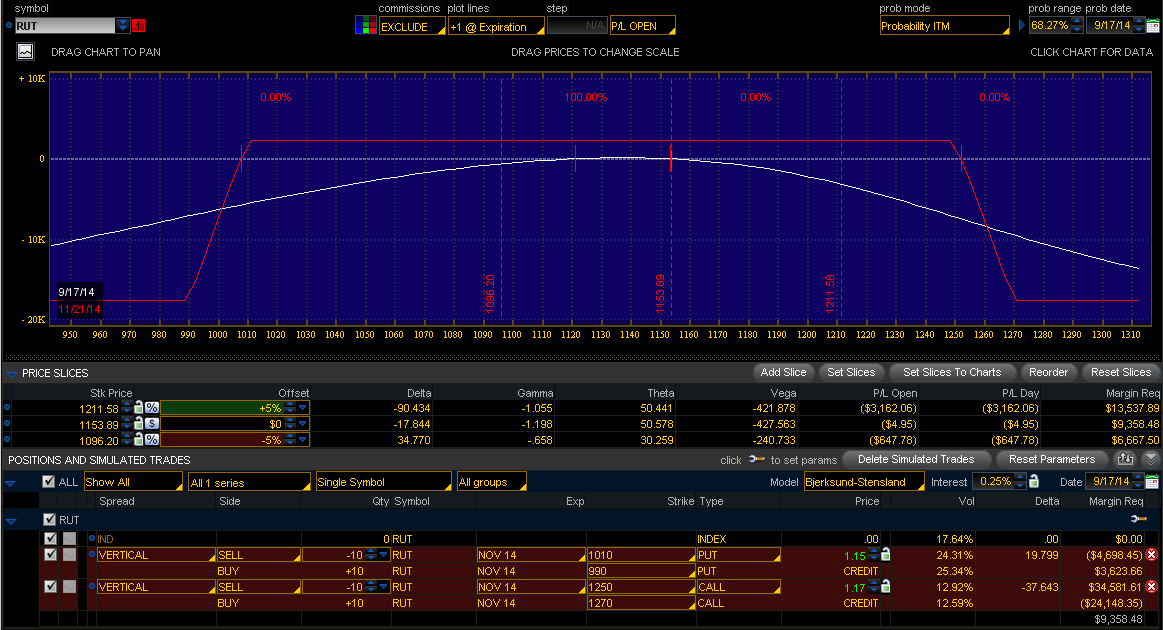This post is the introduction for my next series of iron condor (IC) backtest posts. See my post Thoughts on Options Strategy Backtests for some background on my testing approach.
The last series of IC backtest posts looked at the performance of a symmetric (equal quantities of long and short calls and puts) "no touch" IC on the RUT, SPX, and NDX. The structure of these ICs resembled the image below.
I modeled this trade in TOS today, with 64 days to expiration (DTE). With approximately 8 delta short strikes and a 20 point wing width, this RUT condor is short almost 18 delta. The maximum profit on this trade is $2,320, with a maximum risk of $17,680.
In my next series of IC backtests, we will look at a delta neutral version of this trade. In order to modify the position deltas, I will decrease the quantity of call spreads. I will leave the strikes in the same positions that they were in for the symmetric "no touch" backtests. If we take the trade in the image above and decrease the number of call spreads from 10 to 5, the delta of the position will change from -18, to +1. This new structure is shown in the image below.
This trade has a maximum profit of $1,735, and a maximum risk of $18,265.
In my new series of posts, the automated backtester will construct broken wing ICs that are delta neutral. The quantity of call spreads will change from trade to trade in order to start with a delta neutral IC. In some situations, trades may start with 5 call spreads and in other situations the trades may start with 7 or 8 call spreads. This quantity will be automatically adjusted to create a delta neutral starting structure. The backtester can automate adjustments, but in this series the trades will again be "no touch" ... no intra-trade adjustments.
A blog about options trading strategies (Iron Condors, Strangles, Calendars, Butterflies), equities rotation strategies, and Java related technologies to backtest and automate trading.
Wednesday, September 17, 2014
Delta Neutral Iron Condor
Labels:
Backtesting,
Delta Neutral,
Iron Condor,
No Touch,
Options Trading


No comments:
Post a Comment